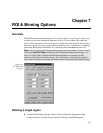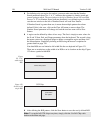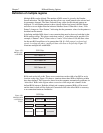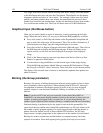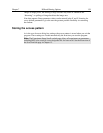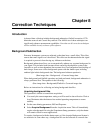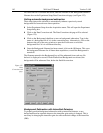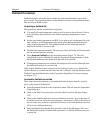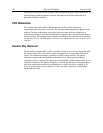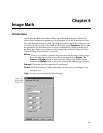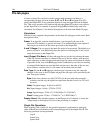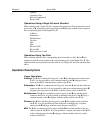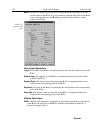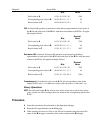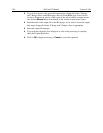
Chapter 8 Correction Techniques 143
Flatfield Correction
Flatfield correction allows the user to divide out small nonuniformities in gain from
pixel to pixel. The instructions below set the flatfield correction to be performed before
data are saved to RAM or disk.
Acquiring a flatfield file
This operation is similar to normal data acquisition.
➧ Use exactly the same temperature setting as will be used in data collection. Wait at
least 30 minutes after the detector has reached operating temperature to ensure
stability.
➧ Set the same binning parameters and ROI. If you plan to use a background file with
data collection, on the Experiment Setup dialog select Background and enter the
name of the background file. This background file will be subtracted from the
flatfield file before it is saved to disk.
➧ Illuminate the detector uniformly. The accuracy of this uniformity will be translated
into an accurate flatfield correction.
➧ Select
Acquire Flatfield
from the Acquisition menu (Figure 73). This will
immediately acquire a flatfield file using the Experiment Setup parameters. Unlike
background subtraction, the shutter will open and close normally.
➧ If background subtraction was selected, the background file will be subtracted from
the flatfield file before it is saved to disk.
If the Acquire Flatfield feature is found to be too limiting in some way, a flatfield file
can be collected as a normal data file. Once the file is collected, enter the filename in the
Flatfield Correction filename box on the Experiment Setup Data Corrections tab page
see (Figure 125).
Automatic flatfield correction
These steps instruct the software to automatically divide each new data file, pixel-by-
pixel, by the specified flatfield file.
➧ Select Experiment Setup from the Acquisition menu. This will open the Experiment
Setup dialog box.
➧ Click on the Data Corrections tab to select the Data Corrections tab page (Figure
125).
➧ Click on the Flatfield check box to turn on Flatfield correction. Type in the name of
a flatfield correction file in the current directory. Alternatively, click on the button at
the end of the entry window to open the file browser to select the flatfield correction
file if it is in a different directory.
➧ Once the Flatfield filename has been specified, click on the OK button. This saves
the flatfield filename for all future data acquisitions, or until the Flatfield correction
is turned off.



